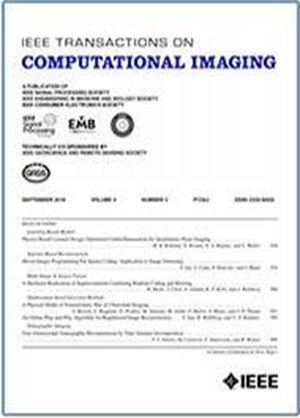Masked Autoencoder-Based Knowledge Transfer for Spectral Reconstruction From RGB Images
IF 4.8
2区 计算机科学
Q2 ENGINEERING, ELECTRICAL & ELECTRONIC
引用次数: 0
Abstract
Mainstream spectral reconstruction methods typically meticulously design complex and computationally intensive architectures in convolutional neural networks (CNNs) or Transformers to model the mapping from RGB to hyperspectral image (HSI). However, the bottleneck in achieving accurate spectral reconstruction may not lie in model complexity. Direct end-to-end learning on limited training samples struggles to encapsulate discriminative and generalizable feature representations, leading to overfitting and consequently suboptimal reconstruction fidelity. To address these challenges, we propose a new Masked Autoencoder-based Knowledge Transfer network for Spectral Reconstruction from RGB images (MAE-KTSR). MAE-KTSR decouples the feature representation process into a two-stage paradigm, facilitating a holistic comprehension of diverse objects and scenes, thereby enhancing the generalizability of spectral reconstruction. In the first stage, we introduce Spatial-Spectral Masked Autoencoders (S基于掩膜自编码器的RGB图像光谱重建知识转移
主流的光谱重建方法通常在卷积神经网络(cnn)或变压器中精心设计复杂的计算密集型架构,以模拟从RGB到高光谱图像(HSI)的映射。然而,实现精确光谱重建的瓶颈可能不在于模型的复杂性。在有限的训练样本上进行直接的端到端学习,难以封装判别性和可泛化的特征表示,导致过拟合,从而导致重建保真度次优。为了解决这些挑战,我们提出了一种新的基于掩膜自编码器的RGB图像光谱重建知识转移网络(MAE-KTSR)。MAE-KTSR将特征表示过程解耦为两阶段范式,有利于对不同对象和场景的整体理解,从而增强了光谱重建的泛化能力。在第一阶段,我们引入了空间-频谱掩码自编码器(S$^{2}$-MAE),在受限的频谱条件下通过掩码建模提取判别光谱特征。S$^{2}$-MAE从部分屏蔽的输入重建光谱图像,学习可推广的特征表示,为rgb到hsi的重建提供有用的先验知识。在第二阶段,部署轻量级卷积重建网络,进一步提取和聚合局部频谱空间特征。具体而言,引入了一种阶段间特征融合模块(ISFF),以有效利用第一阶段学习到的基于mae的全局频谱先验。在三个光谱重建基准(NTIRE2020-Clean、CAVE和Harvard)和一个真实高光谱数据集(Pavia University)上的实验结果证明了MAE-KTSR的有效性。此外,MAE-KTSR经过实验验证,可以促进下游实际应用,如HSI分类。
本文章由计算机程序翻译,如有差异,请以英文原文为准。
求助全文
约1分钟内获得全文
求助全文
来源期刊

IEEE Transactions on Computational Imaging
Mathematics-Computational Mathematics
CiteScore
8.20
自引率
7.40%
发文量
59
期刊介绍:
The IEEE Transactions on Computational Imaging will publish articles where computation plays an integral role in the image formation process. Papers will cover all areas of computational imaging ranging from fundamental theoretical methods to the latest innovative computational imaging system designs. Topics of interest will include advanced algorithms and mathematical techniques, model-based data inversion, methods for image and signal recovery from sparse and incomplete data, techniques for non-traditional sensing of image data, methods for dynamic information acquisition and extraction from imaging sensors, software and hardware for efficient computation in imaging systems, and highly novel imaging system design.
 求助内容:
求助内容: 应助结果提醒方式:
应助结果提醒方式:


